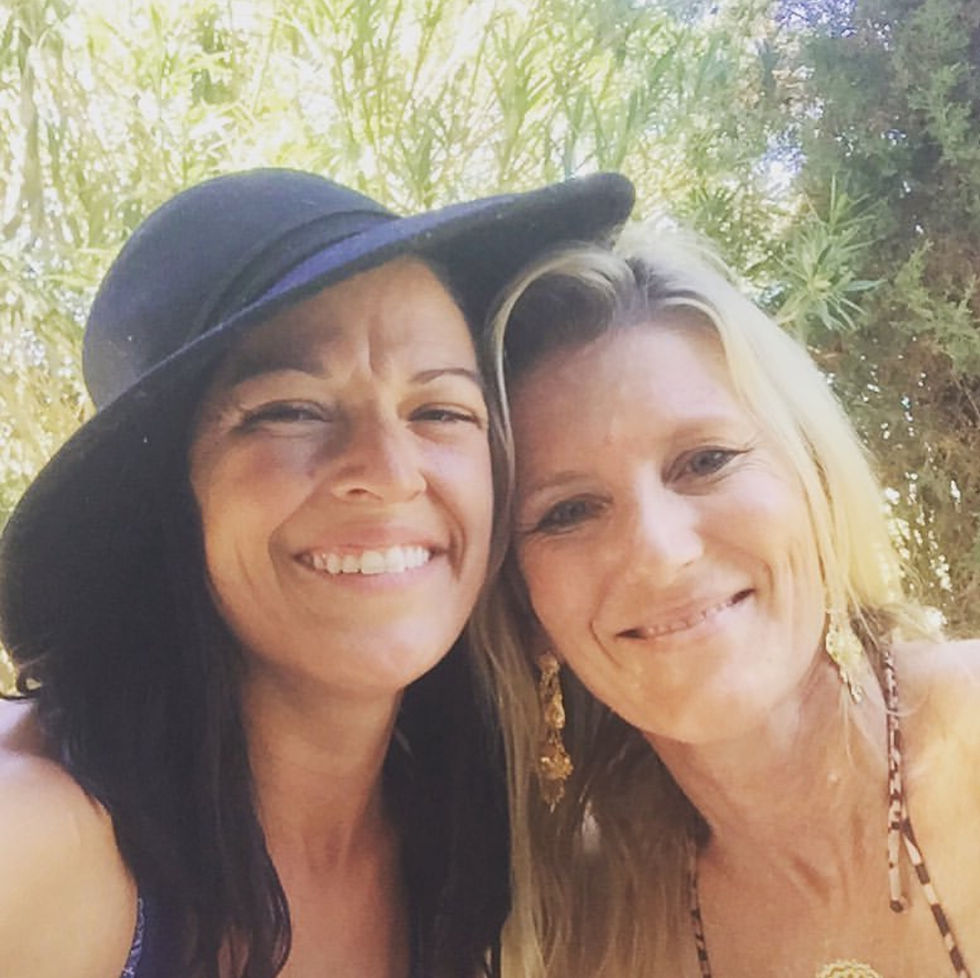
Embracing the Flow: The Transformative Power of PRANA Vinyasa by Shiva Rea
- chloedeedudley
- Mar 26
- 7 min read
In the world of yoga today, practitioners are continually seeking to deepen their practice, expand their consciousness, and connect more intimately with their bodies. One of the most dynamic and transformative styles that has emerged in recent years is PRANA Vinyasa, a groundbreaking approach developed by the visionary teacher Shiva Rea. Known for her fluid and rhythmic sequences, Shiva Rea has inspired countless individuals to embrace their bodies' natural energy flow through her innovative style of vinyasa.
Yoga, with its myriad of styles and traditions, has long been a pathway to self-discovery, healing, and transformation. Among the contemporary styles that have shaped the modern landscape of yoga, PRANA Vinyasa stands out as a vibrant and dynamic practice that invites practitioners to connect deeply with their breath, body, and the flow of energy. In this blog post, we’ll explore the origins, development, and philosophy behind PRANA Vinyasa, as well as its impact on the global yoga community

Whether you are stepping onto your mat for the first time or are a seasoned practitioner, engaging with PRANA Vinyasa offers an opportunity to listen to your body, embrace the energy within, and dance through life’s challenges with grace and joy. As the flow of prana guides you, you may just discover the warrior within you waiting to emerge.
A Journey of Exploration
PRANA Vinyasa is not just a method but rather a philosophy that celebrates the dance of life and the connection between movement, breath, and awareness. At the core of Shiva's teachings is the idea that yoga is a living art form—an expression of the individual spirit. This philosophy emerged from her extensive studies and personal practice, culminating in her master's thesis on the Dancing Warrior sequence.
The Dancing Warrior invites practitioners to embody the powerful yet graceful essence of a warrior. This sequence harmonizes strength with fluidity, emphasizing that true power arises not from rigidity but from the ability to move gracefully through challenges. Shiva designed this sequence to empower students, encouraging them to find inner strength while remaining grounded in the present moment.
The Essence of PRANA Vinyasa
What sets PRANA Vinyasa apart from traditional vinyasa flow is its focus on the concept of prana, or life force. Shiva Rea emphasizes that every pose, every transition, and every breath is interwoven with this energy. This dance of prana invites practitioners to recognize their internal rhythms and align with the natural cycles of life.
PRANA Vinyasa explores the flow of energy through a series of dynamic sequences that build upon one another, allowing practitioners to enter a state of flow that is both meditative and invigorating. The practice encourages adaptability, creativity, and spontaneity, urging teachers and students alike to experiment with movement and embrace their unique expressions of yoga.
The Genesis of PRANA Vinyasa
Shiva Rea, a renowned yoga teacher and innovator, has been instrumental in bringing the practice of PRANA Vinyasa to the forefront of contemporary yoga. Her journey began in the 1990s when she immersed herself in various styles of yoga, including Ashtanga, Hatha, and Iyengar. However, it was her fascination with the concept of prana—the life force that flows within all living beings—that inspired her to create a unique system that combines the principles of Vinyasa flow with the elemental qualities of nature.
Rea’s travels through India and her study of various Eastern philosophies, particularly Ayurveda, played a pivotal role in shaping PRANA Vinyasa. The practice became a synthesis of movement, breath, and intention, emphasizing the importance of flowing energy rather than rigid postures. This approach resonates with the roots of yoga, where movement is seen as a manifestation of the inner flow of prana.
The Philosophy of PRANA Vinyasa
At the heart of PRANA Vinyasa is the belief that movement is a form of meditation, allowing practitioners to experience the ebb and flow of life itself. The practice encourages a deep awareness of the breath, helping to cultivate an intimate connection with one's internal landscape. PRANA Vinyasa is not just about physical postures; it's a holistic approach that integrates mindfulness, energy awareness, and creative expression.
Rea’s system is built on the foundation of the five elements—Earth, Water, Fire, Air, and Space. Each class is crafted to honor these elements and explore how they manifest within the body and mind. This elemental approach allows practitioners to experience different qualities of movement, rhythm, and energy, bringing a fresh perspective to their practice.
Earth embodies grounding and stability, encouraging practitioners to connect with their foundation.
Water emphasizes fluidity and adaptability, inviting a sense of surrender and grace.
Fire ignites passion and power, fostering a sense of strength and courage.
Air represents lightness and expansion, promoting openness and freedom in movement.
Space encourages introspection and the exploration of the vastness within.
The Positive Impact of PRANA Vinyasa
Shiva Rea’s influence on vinyasa flow has been profound, shifting the landscape of how yoga is taught and experienced. Her emphasis on rhythm, musicality, and intuitive movement has led to a resurgence of creativity in asana practice. Yoga has transcended a static form; it has become a flowing experience, inviting practitioners to explore their limitations and celebrate their capabilities.
Through workshops, teacher trainings, and a wealth of instructional videos, Shiva has shared her passion for PRANA Vinyasa with thousands worldwide. This global outreach has not only revitalized the vinyasa style but has also made yoga more accessible, inviting practitioners from all walks of life to find their sense of flow.
Connecting with Community
One of the hallmarks of PRANA Vinyasa is the emphasis on community connection. Shiva encourages practitioners to develop a collective energy in their practice, sharing the transformative experience with others. The practice is not just about individual growth but also fostering a sense of unity and support among practitioners.
Her teachings promote an inclusive environment where everyone can embrace their journey, whether they are beginners or seasoned yogis. By highlighting the interconnectedness of all beings, Shiva Rea reminds us that yoga is a universal language of love and connection.
Global Impact and Community
Since its inception, PRANA Vinyasa has attracted a diverse community of practitioners worldwide. Shiva Rea’s teaching style, characterized by creativity, authenticity, and compassion, has inspired countless teachers and students to incorporate the principles of PRANA Vinyasa into their own lives and practices.
Rea has also created a robust teacher training program that empowers instructors to share the wisdom of PRANA Vinyasa. By fostering a network of dedicated teachers, Rea has contributed to the growth of a global community that values the flow of energy and the deep connection to oneself and others.
Beyond the Mat
PRANA Vinyasa extends beyond the confines of the yoga mat. It encourages practitioners to integrate the insights and experiences gained through their practice into daily life. Whether through conscious breathing, mindful movement, or simply being present, the lessons of PRANA Vinyasa remind us to engage with the world around us in a more meaningful way.
The history of PRANA Vinyasa, as developed by Shiva Rea, is a testament to the evolving nature of yoga. Its roots in traditional practices combined with innovative approaches to movement and energy have created a unique and powerful modality that resonates with many. As practitioners continue to explore the flow of prana in their physical, mental, and spiritual lives, PRANA Vinyasa stands as a vibrant expression of yoga's true essence—a journey of connection, transformation, and awakening.
Conclusion
Shiva Rea’s PRANA Vinyasa is a celebration of movement, breath, and the dance of life itself. With her masterful Dancing Warrior sequence as a testament to her innovation, she invites us to explore the rhythms of our own existence. The positive impact of her teachings has transformed the landscape of vinyasa flow, emphasizing the importance of creativity, community, and connection.
Yoga Sequence for YOU to Explore:
PRANA Vinyasa is a dynamic style of yoga developed by Shiva Rea that focuses on the flow of energy (prana) through movement synchronized with breath. This sequence aims to create vitality and awareness in the body while fostering a meditative mind.
Sequence Overview:
Centering and Breath Awareness
Begin in a comfortable seated position (Sukhasana or Easy Pose).
Close your eyes and take a few moments to connect with your breath.
Inhale deeply through the nose, and exhale fully. Continue for 5-10 breaths.
Cat-Cow (Marjaryasana-Bitilasana)
Transition to Tabletop Position.
Inhale, arch your back and gaze up (Cow).
Exhale, round your spine and tuck your chin (Cat).
Repeat for 5 cycles, synchronizing with breath.
Sun Salutations (Surya Namaskar A)
Move into Downward Facing Dog (Adho Mukha Svanasana).
Inhale, look forward, step or jump to the front of the mat for Utkatasana (Chair Pose).
Exhale, fold forward (Uttanasana).
Inhale, half lift (Ardha Uttanasana).
Exhale, step back into Plank, lower down (Chaturanga Dandasana).
Inhale into Upward Facing Dog (Urdhva Mukha Svanasana).
Exhale, return to Downward Facing Dog.
Repeat for 3 rounds.
Warrior Sequence
From Downward Dog, step forward with the right leg into Warrior I (Virabhadrasana I).
Transition into Warrior II (Virabhadrasana II).
Flow into Reverse Warrior (Viparita Virabhadrasana).
Move into Side Angle Pose (Utthita Parsvakonasana).
Flow back to Warrior II, then reverse into Warrior I.
Return to Downward Dog and repeat the sequence on the left side.
Balance Pose
From Downward Dog, flow into a standing forward fold (Uttanasana).
Shift weight to the right foot and lift the left knee (Tree Pose - Vrksasana).
Hold for 5 breaths, then switch sides.
Seated Poses
Sit down with legs extended in front (Dandasana).
Inhale, reach arms up, and exhale into a forward fold (Paschimottanasana).
Transition to bound angle pose (Baddha Konasana).
Optionally practice a gentle spinal twist.
Backbends
Move into Bridge Pose (Setu Bandhasana).
Option for Wheel (Urdhva Dhanurasana) if you feel comfortable.
Come back down to lay flat and prepare for a restorative pose.
Savasana (Corpse Pose)
Lie back, letting your arms and legs fall away from the body.
Close your eyes, focus on your breath, and fully relax for 5-10 minutes.
This PRANA Vinyasa sequence offers a blend of dynamic movement, breathwork, and stillness to your practice. Allow the prana to flow freely through your body as you explore these poses, cultivating a sense of connection and awareness.
I encourage readers to practice this sequence regularly, reminding them that yoga is a personal journey, and each person's experience will be unique.
Tips for Practice:
Maintain deep, rhythmic breathing throughout the sequence.
Modify poses to suit your level of expertise and comfort.
Focus on the transition between poses as much as the poses themselves.



Comments